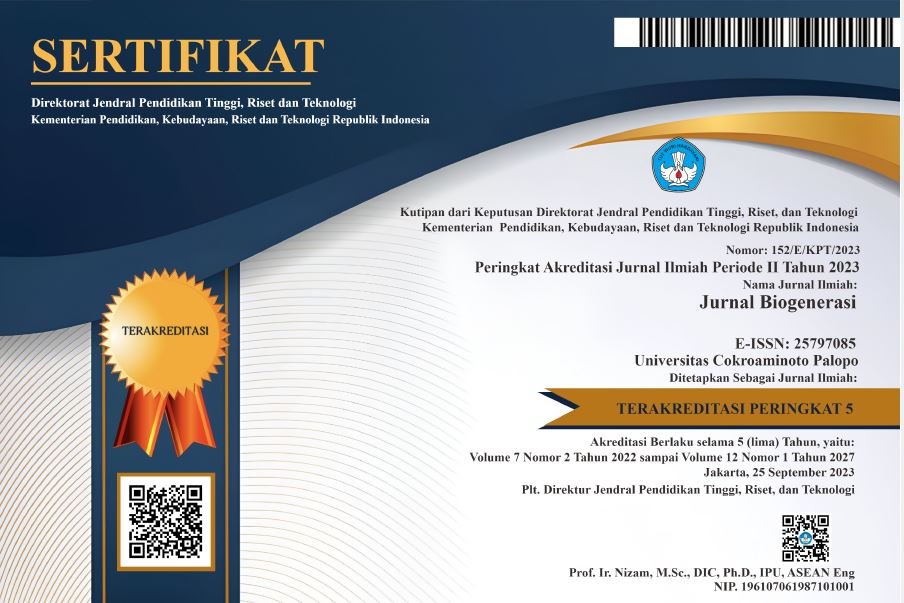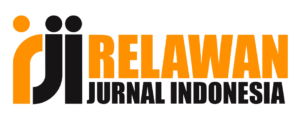Artikel Review : Agen Pengendali Hayati Serangga Hama Penggerek Buah Kopi (Hypothenemus hampei Ferr.) pada Tanaman Kopi
DOI:
https://doi.org/10.30605/biogenerasi.v10i2.5328Keywords:
Pests, Coffee, Biological Control, PBKoAbstract
Coffee is an important commodity for the Indonesian economy, which is the third largest coffee producer in the world after Brazil and Vietnam. Coffee cultivation in Indonesia began in 1699. Coffee has become a widely known agricultural product and is expected to increase state revenues from exports. The types of coffee cultivated include Robusta, Arabica, and Liberica, with Robusta dominating production. Indonesia. Coffee farmers face problems in the form of decreased quality and quantity of production caused by pest attacks. One of the main pests is the coffee berry borer (CBO), known by the scientific name Hypothenemus hampei. This pest is difficult to control and can damage coffee fruit and beans, lowering its market price. The distribution of CBO is almost evenly distributed throughout Indonesia, with varying levels of damage in various regions, such as 64% in Lampung and 80% in Papua. This pest has a complete life cycle with four stages: eggs, larvae, pupae, and adults. Females can produce 50 eggs, which hatch in 5-9 days. The CBO life cycle takes about 25 days, with varying lifespans for females and males. PBKo attacks occur on coffee berries aged 8 weeks until harvest, which can damage coffee beans and reduce yields. The age of the coffee plant also affects the quantity of fruit produced and the distribution of pests. Coffee plants that are not exposed to direct sunlight have higher temperatures and humidity, supporting the growth of PBKo. PBKo pest control can be done biologically/biological control. Some PBKo pest control agents include predators, parasitoids, entomopagenic fungi, entomopagenic bacteria, and entomopagenic nematodes.
Downloads
Downloads
Published
How to Cite
Issue
Section
License
In submitting the manuscript to the journal, the authors certify that:
- They are authorized by their co-authors to enter into these arrangements.
- The work described has not been formally published before, except in the form of an abstract or as part of a published lecture, review, thesis, or overlay journal.
- That it is not under consideration for publication elsewhere,
- That its publication has been approved by all the author(s) and by the responsible authorities – tacitly or explicitly – of the institutes where the work has been carried out.
- They secure the right to reproduce any material that has already been published or copyrighted elsewhere.
- They agree to the following license and copyright agreement.
License and Copyright Agreement
Authors who publish with this journal agree to the following terms:
- Authors retain copyright and grant the journal right of first publication with the work simultaneously licensed under Creative Commons Attribution License (CC BY 4.0) that allows others to share the work with an acknowledgment of the work's authorship and initial publication in this journal.
- Authors are able to enter into separate, additional contractual arrangements for the non-exclusive distribution of the journal's published version of the work (e.g., post it to an institutional repository or publish it in a book), with an acknowledgment of its initial publication in this journal.
- Authors are permitted and encouraged to post their work online (e.g., in institutional repositories or on their website) prior to and during the submission process, as it can lead to productive exchanges, as well as earlier and greater citation of published work.


.png)

